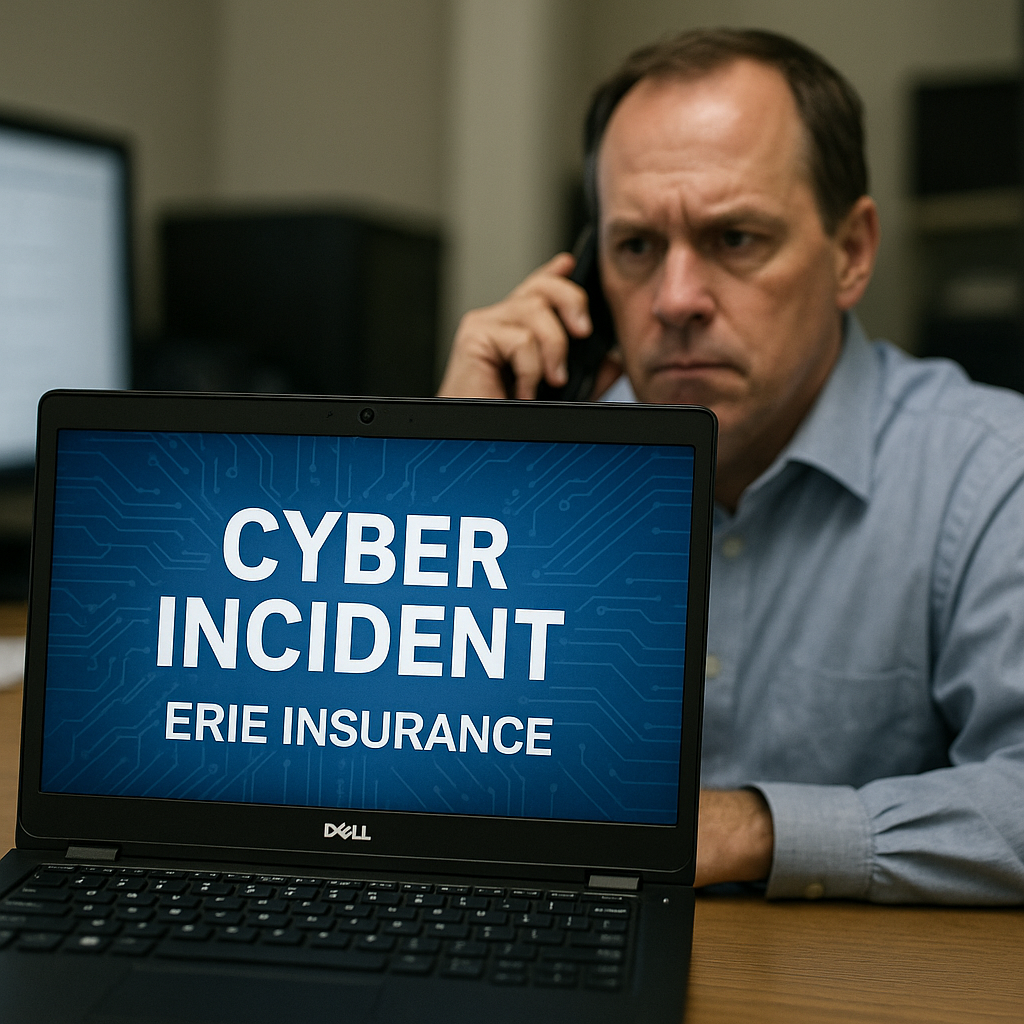In an increasingly interconnected digital world, organizations face constant threats from malicious actors. Recently, Erie Insurance confirmed that a widespread network outage impacting their systems was, in fact, a significant cybersecurity event. This incident highlights the critical importance of robust cyber defense strategies and the potential disruption a successful cyberattack can cause, not just for a company, but for its customers and partners alike. Understanding the nature of such events is key to safeguarding personal and sensitive information in the digital landscape.
Understanding the Erie Insurance Cybersecurity Event
On Saturday, June 7, 2025, Erie Insurance’s information security team detected unusual network activity, which was quickly identified as an “information security event.” This discovery prompted immediate action, with the company initiating its incident response protocols to safeguard its systems and data. The ongoing network outage has affected various services, including customer access to online portals, claims processing, and general customer care operations.
Key details emerging from the situation include:
- Immediate Response: Upon identifying the anomalous activity, Erie Insurance took protective measures, including system shutdowns, to contain the potential spread of the attack. While effective in mitigating further damage, this also resulted in the widespread network outage.
- Law Enforcement Involvement: The company promptly engaged with law enforcement agencies, indicating the severity and potential criminal nature of the cybersecurity incident. This is a standard procedure for significant data breaches or cyberattacks to facilitate investigation and potential prosecution.
- Forensic Analysis: Erie Insurance is actively conducting a comprehensive forensic analysis with the assistance of leading third-party cybersecurity experts. This crucial step aims to determine the full scope, nature, and ultimate impact of the event, including whether customer data exfiltration or ransomware encryption occurred.
- Customer Advisory: In response to potential risks, Erie Insurance has proactively warned its customers to be vigilant against phishing scams. They have emphasized that the company will not contact customers via phone or email to request payments during this outage and advised against clicking suspicious links or providing personal information. This proactive warning is a vital cybersecurity best practice to prevent secondary attacks.
- Industry-Wide Impact: Interestingly, another Pennsylvania-based insurer, Philadelphia Insurance Co., has also reported a similar network outage around the same time, suggesting a possible broader targeting of the insurance sector by cybercriminals.
While the full details of the attack vector and the specific type of cyberattack (e.g., ransomware, denial-of-service, data breach) are still under investigation, the widespread network disruption points to a significant infiltration. Such events often involve sophisticated techniques like phishing, social engineering, malware deployment, or exploiting known software vulnerabilities to gain unauthorized access to critical systems.
Why Cybersecurity Incidents in the Insurance Sector Matter
Insurance companies are prime targets for cybercriminals due to the vast amounts of sensitive personal and financial data they hold. This includes:
- Personal Identifiable Information (PII): Names, addresses, dates of birth, Social Security numbers.
- Financial Information: Bank account details, credit card numbers, payment history.
- Health Information: For health and life insurance policyholders.
- Policy Details: Comprehensive records of coverage, claims, and beneficiaries.
A successful cyberattack on an insurer can lead to severe consequences, including significant financial losses, reputational damage, regulatory fines, and, most importantly, the compromise of customer data. For individuals, this could result in identity theft, financial fraud, and other forms of cybercrime.
Recommendations for Enhanced Cyber Resilience
The Erie Insurance incident serves as a stark reminder for both organizations and individuals to prioritize cybersecurity. For businesses, especially those handling sensitive data, strengthening cyber resilience is paramount:
- Robust Incident Response Plan: Develop, regularly test, and update a comprehensive incident response plan to ensure a swift and effective reaction to security breaches.
- Multi-Factor Authentication (MFA): Implement MFA across all systems and applications to add an extra layer of security beyond just passwords.
- Regular Security Audits and Penetration Testing: Proactively identify and address vulnerabilities in networks and applications.
- Employee Cybersecurity Training: Educate employees on phishing, social engineering tactics, and safe computing practices.
- Data Encryption: Encrypt sensitive data at rest and in transit to protect it even if systems are compromised.
- Patch Management: Ensure all software and systems are regularly updated with the latest security patches to address known vulnerabilities.
- Backup and Recovery: Maintain secure, isolated backups of critical data to facilitate recovery in the event of a ransomware attack or data loss.
For individuals, staying vigilant is crucial:
- Be Skeptical of Unsolicited Communications: Always verify the authenticity of emails or calls requesting personal information, especially those related to financial accounts or payments.
- Use Strong, Unique Passwords: Employ complex passwords and consider using a password manager.
- Enable MFA: Wherever available, activate multi-factor authentication on your online accounts.
- Monitor Financial Accounts: Regularly check bank statements and credit reports for any suspicious activity.
- Stay Informed: Keep abreast of common cyber threats and security best practices.
Conclusion
The cybersecurity event at Erie Insurance underscores the persistent and evolving nature of cyber threats. It highlights the critical need for organizations to invest in advanced cybersecurity measures and for individuals to remain vigilant in protecting their digital footprint. By embracing a proactive and multi-layered approach to security, we can collectively enhance our cyber resilience and mitigate the impact of future attacks, ensuring greater safety and trust in our interconnected digital world.




